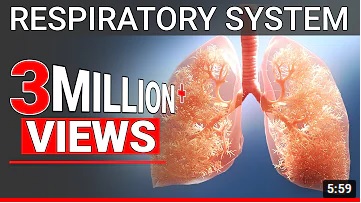Respiration
The human respiratory system contains the organs that allow us to get the oxygen we need and to remove the waste carbon dioxide we don't need. It contains these parts:
- lungs
- tubes leading from the lungs to the mouth and nose
- various structures in the chest that allow air to move in and out of the lungs.
Ventilation:
Movements of the ribs, rib muscles and diaphragm allow air into and out of the lungs. Take care - this is called breathing or ventilation, not respiration. When we breathe in, we inhale. When we breathe out, we exhale.
Air passes between the lungs and the outside of the body through the windpipe, called the trachea. The trachea divides into two bronchi, with one bronchus for each lung.
Each bronchus divides further in the lungs into smaller tubes called bronchioles. At the end of each bronchiole, there is a group of tiny air sacs. These air sacs have bulges called alveoli to increase their surface area.
Gas Exchange:
We need to get oxygen from the air into the blood, and we need to remove waste carbon dioxide from the blood into the air. Moving gases like this is called gas exchange. The alveoli are adapted to make gas exchange in lungs happen easily and efficiently.
Here are some features of the alveoli that allow this:
- they give the lungs a really big surface area
- they have moist, thin walls (just one cell thick)
- they have a lot of tiny blood vessels called capillaries.
The gases move by diffusion from where they have a high concentration to where they have a low concentration:
- Oxygen diffuses from the air in the alveoli into the blood.
- Carbon dioxide diffuses from the blood into the air in the alveoli.











